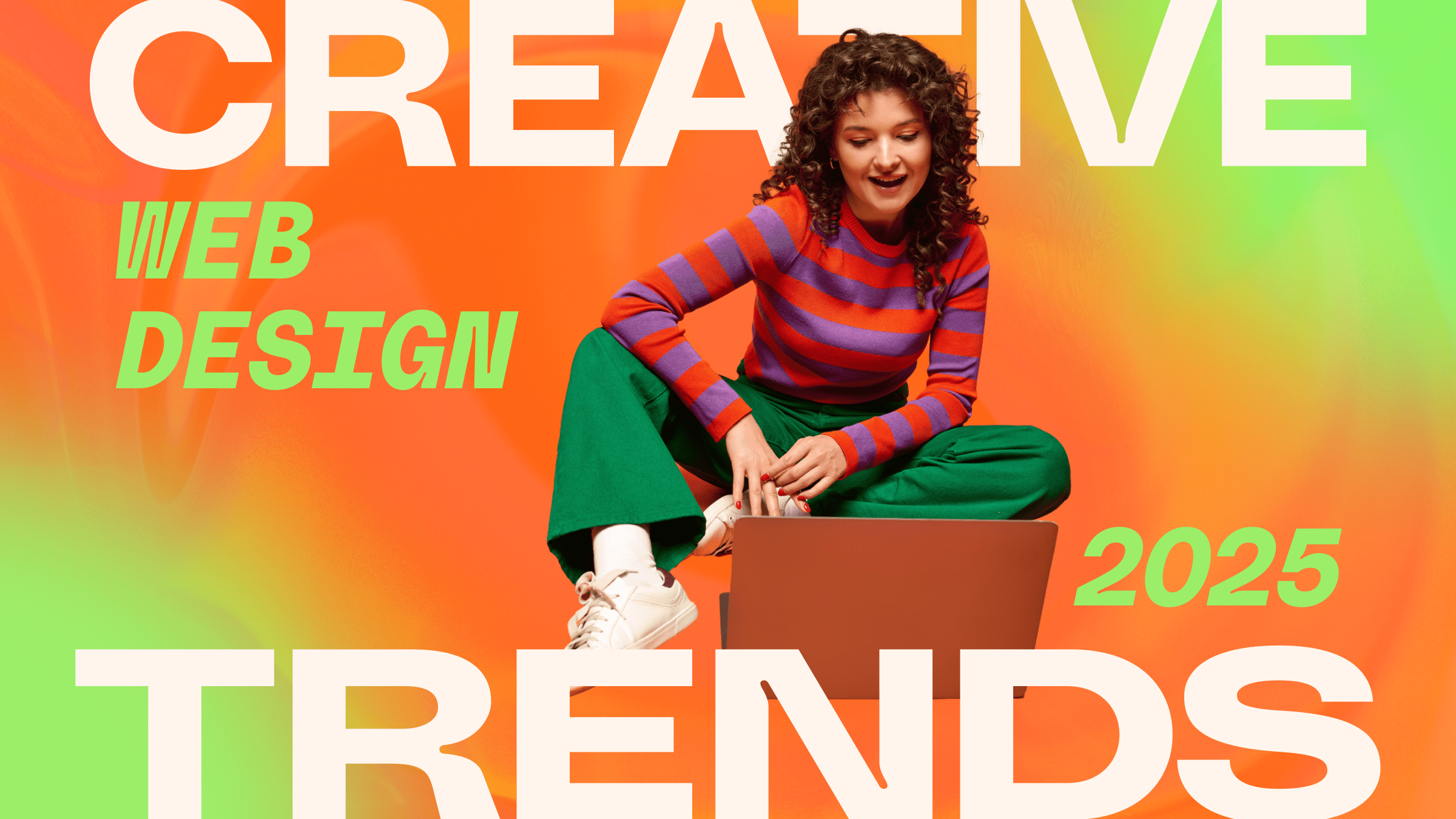The role of feedback and analytics in improving Web Design Agency performance
Wiki Article
Checking Out Imaginative Fads in Web Design for Modern Companies
The landscape of web design is continuously evolving, mirroring the vibrant requirements of modern organizations. Current trends highlight a preference for minimalism, vibrant typography, and appealing interactivity. Business progressively focus on user experience via mobile-first principles and personalized content. Additionally, a focus on sustainability is gaining grip. Recognizing these fads is essential for services aiming to attract attention in a crowded marketplace. What ramifications do these changes hold for the future of digital involvement?Welcoming Vibrant Typography
Strong typography has arised as a specifying aspect in contemporary web design, recording attention and sharing messages with striking clearness. This fad focuses on aesthetically impactful message that enhances user interaction and brand identification. Designers typically use distinct typefaces and extra-large typefaces to produce a power structure, assisting audiences through web content perfectly.
The calculated usage of bold typography enables reliable storytelling, allowing brand names to interact their values succinctly. It serves not only visual functions but additionally useful ones, as it enhances readability across gadgets and display sizes.
As websites contend for user focus, vibrant typography attracts attention in a saturated digital landscape. Its flexibility makes it possible for developers to try out contrasting layouts and colors, better intensifying its efficiency. Inevitably, embracing bold typography represents a change towards even more communicative and expressive web design, fostering a deeper connection in between brand names and their target markets.
The Surge of Minimalist Layout
As electronic settings come to be increasingly cluttered, the surge of minimalist layout uses a rejuvenating option that prioritizes simplicity and performance. This design viewpoint remove unneeded elements, permitting content to take spotlight. By focusing on tidy lines, ample white room, and a minimal shade combination, minimal design boosts user experience and enhances navigation.Companies adopting this pattern aim to communicate their brand message clearly and efficiently, fostering a feeling of calmness and clarity. The absence of distractions helps customers concentrate on vital details, resulting in enhanced involvement and conversion prices. Additionally, minimalist style aligns well with mobile-first methods, ensuring that web sites stay user-friendly and accessible across various tools.
Eventually, the surge of minimalist layout mirrors a broader change towards focusing on user requirements and preferences, making it a powerful tool for modern-day companies seeking to make a lasting effect in the digital landscape.
Immersive Animations and Interactivity
While lots of internet designers welcome minimalist aesthetic appeals, an additional engaging pattern getting traction is using immersive computer animations and interactivity. This technique boosts user interaction by producing interesting experiences that attract site visitors right into the material. Designers utilize vibrant components such as computer animated backgrounds, scrolling results, and interactive infographics to connect intricate ideas in an accessible manner.These computer animations not only offer visual interest but additionally overview individuals via the navigating procedure, making interactions a lot more user-friendly. As an example, float impacts and computer animated changes can motivate individuals to explore additionally, leading to boosted time invested in the website.
Furthermore, this pattern lines up with the wider motion towards narration in web design, where animations work as narrative gadgets that communicate brand name messages effectively. By incorporating immersive computer animations and interactivity, businesses can separate themselves in a crowded online landscape, eventually enhancing user complete satisfaction and brand name loyalty.
Mobile-First Layout Principles
Mobile-first design principles emphasize prioritizing user experience by ensuring websites work flawlessly on smaller displays. This technique integrates responsive layout strategies that adapt to numerous tool dimensions while keeping aesthetic honesty. In addition, it concentrates on touchscreen navigating design, boosting usability for mobile customers.Focusing On User Experience
How can developers successfully focus on user experience in a significantly mobile-centric world? Emphasizing mobile-first style concepts is essential, as individuals largely involve with sites through smart phones. This strategy motivates designers to simplify web content, ensuring it is conveniently available and navigable on smaller displays. Secret techniques consist of simplifying navigating, minimizing lots times, and employing touch-friendly elements that improve interactivity. Furthermore, prioritizing clear typography and intuitive formats can substantially improve user fulfillment. Designers must continually gather user responses to fine-tune their strategies, adjusting to evolving user demands and choices. By concentrating on these elements, services can develop an appealing electronic experience that fosters commitment and drives conversions, eventually straightening with the expectations these days's mobile customers.Receptive Format Strategies
Designers accept receptive design techniques to create adaptable and flexible internet experiences that deal with different screen dimensions. This technique focuses on mobile-first style principles, ensuring peak performance on smaller tools prior to scaling up for larger displays. By making use of fluid grids, versatile photos, and media questions, designers can maintain a cohesive visual identification across all systems. This approach not just boosts user engagement but likewise improves internet search engine rankings, as mobile-friendly sites are preferred by search algorithms. Furthermore, receptive designs permit businesses to reach a more comprehensive audience, accommodating users on desktops, smart devices, and tablets alike. Generally, implementing these strategies is vital for contemporary web design, making sure that services remain competitive in an ever-evolving digital landscape.Touchscreen Navigating Layout
With the rise of mobile devices, touchscreen navigation has come to be a basic facet of web design. Developers are significantly taking on mobile-first principles to improve user experience and involvement. Web Design services. Efficient touchscreen navigating focuses on larger switches and intuitive motions, allowing users to communicate conveniently with material. This technique minimizes disappointment and motivates expedition, as users can navigate effortlessly with their fingers. Furthermore, including swipe motions and faucet capability satisfies the all-natural actions of mobile users. Comments mechanisms, such as aesthetic cues and animations, boost use better by verifying activities. As touchscreens control user interactions, employing these layout aspects not just aligns with modern-day assumptions however additionally fosters a more obtainable and delightful browsing experience for all usersPersonalized User Experiences
What makes a customer really feel really involved on a web site? The solution often depends on customized user experiences. By customizing material and navigation to specific choices, companies can produce a significant connection with their audience. This personalization can be achieved through various methods, such as examining user habits, using cookies, and offering personalized suggestions based upon previous communications.Ecommerce platforms that recommend items based on browsing background not just boost user experience yet also increase conversion prices. Moreover, incorporating vibrant material that adapts to the user's area or time of day can additionally enrich involvement.
Furthermore, tailored introductions or messages can make customers really feel valued and understood. As modern-day businesses endeavor to stick out in a competitive electronic landscape, welcoming individualized user experiences comes to be essential, promoting commitment and encouraging repeat sees. Eventually, this approach transforms a basic web site right into an interactive platform that resonates with its target market.
Sustainability in Web Design
As the electronic landscape proceeds to develop, the relevance of sustainability in web design has actually obtained substantial interest. Designers are significantly knowledgeable about the ecological impact their developments can have, motivating a change towards environment-friendly techniques (agency for web design). Sustainable web design concentrates on maximizing websites to lower energy usage and carbon footprints. Methods include utilizing minimalistic design principles, maximizing pictures, and utilizing efficient coding methods to boost loading speedsIn addition, the option of organizing companies plays a crucial function; lots of designers are currently choosing eco-friendly hosting solutions powered by renewable power. By prioritizing access and easy to use navigating, sustainable designs additionally cater to a broader audience, boosting usability. This aware strategy not just charms to environmentally-minded customers however additionally adds to the general long life and effectiveness of internet sites. Ultimately, sustainability in web design shows an expanding trend in the direction of liable digital practices that line up with modern organization worths.

Regularly Asked Concerns
How Can I Choose the Right Shade System for My Site?
To pick the appropriate color plan for a web site, one must take into consideration the brand name's identity, target audience, and psychological impact. Using color theory and testing combinations can improve user experience and aesthetic charm significantly.What Are the Best Devices for Prototyping Website Design?
The very best devices for prototyping internet designs include Figma, Map out, Adobe XD, and InVision. These systems supply user-friendly user interfaces, partnership functions, and substantial libraries, making them perfect for designers to produce and improve their ideas properly.Exactly how Do I Measure the Performance of My Web Design?
To gauge web design efficiency, one should evaluate user interaction metrics, conversion prices, and use feedback (Website Design Agency). A/B screening and heatmaps can additionally give insights right into user habits, leading necessary changes for better efficiency and user experienceWhat Prevail Web Design Errors to Stay Clear Of?
Typical web design blunders include messy designs, inadequate navigation, slow-moving packing times, absence of mobile optimization, poor comparison, and disregarding user comments. Preventing these pitfalls improves user experience and increases overall effectiveness of the site.Just how Commonly Should I Update My Site Layout?
A website layout ought to be updated every 2 to 3 years, or earlier if considerable changes in branding or innovation happen. Normal updates maintain the site fresh, functional, and straightened with present user expectations.
Report this wiki page